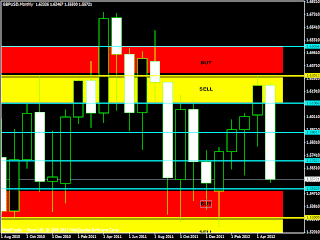What I will share today is the yearly trading cycle that is best suited for retail traders. Put differently, the safest months of the year to long or short. I have earlier discussed the period for a different purpose. If you want to know the best time to go long/short you will find the answer in the Monthly Price Action Analysis (MPAA). As a reminder, price moves for the first 6 months (Jan-June) in one direction (bull/bear), consolidates for the next 3 months (July-Sept), and closes for the last 3 months (Oct-Dec). For GBPUSD and most major pairs, prices reach their peaks (high/lows) twice in year i.e. May/June and Nov/Dec.
The best times for any retail trader to go long/short as long as the Cable is concern is therefore in the months May/June & Nov/Dec of every year. Nov/Dec are however not reliable because it is the end of the year. The big players after booking their profits, usually start on a clean slate and it could be bull/bear. November/December could go either way. On the other hand, May/June is the best period to take a decision on wheether to go long or short for the following reasons:
a) The ‘big players’ would have pushed the price in the desired direction for about 5 months
b) By this period, price would have moved by at least a thousand pips and more
c) After this period price generally don’t move far higher or lower, unless something dramatic happens
d) The highest/lowest prices for the year are usually recorded around this period
e) Most big players begin to book their profits and reverse their positions around this period of the year.
If you want to increase your chance of your success as a retail trader, roll your trading calendar from May to April of the following year, but always remember to book your profit between October-December.
I attached a monthly and a weekly charts for about 20 years period to clearly illustrate this above analysis.










